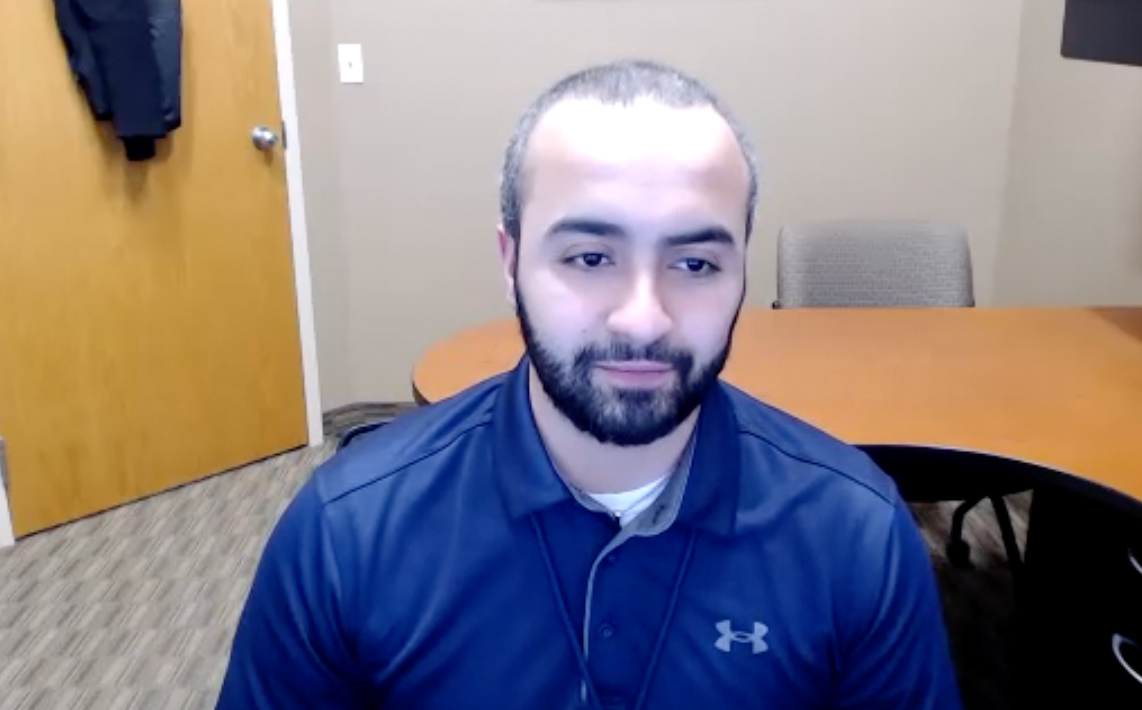Promising Safety and Activity Observed with Durvalumab/Vicineum in High-Grade NMIBC
Patients with Bacillus-Calmette Guérin–unresponsive non–muscle invasive bladder cancer experienced promising responses to treatment with of durvalumab and Vicineum, which was also well tolerated.
Treatment with durvalumab (Imfinzi) and Vicineum (oportuzumab monatox, VB4-845) yielded complete responses (CRs) and a tolerable safety in patients with Bacillus-Calmette Guérin (BCG)–unresponsive non–muscle invasive bladder cancer (NMIBC), according to the interim findings from a phase 1 trial (NCT03258593) presented at the 2021 AUA Annual Meeting.1
In the small, single-arm study of 12 patients, data showed that the 3-month CR rate was 42% and the 12-month CR rate was 17% in this patient population.
“The combination of Vicineum and durvalumab in BCG-unresponsive NMIBC is tolerated well and no new safety signals were identified; the doublet has a similar safety profile to [what is seen with] both agents used individually,” Sandeep Gurram, MD, a urologic oncologist at National Cancer Institute, said in a virtual presentation on the findings. “Further biomarker analysis may help predict which patients will be responders on therapy.”
Vicineum is a recombinant fusion protein made up of an anti-EpCAM linked to a truncated form of Pseudomonas exotoxin A. Ninety-eight percent of patients who are refractory to BCG harbor EpCAM overexpression. Previously, Vicineum was evaluated in the 3-cohort, phase 3 VISTA trial (NCT02449239), in which the duration of response in patients who achieved a CR with the agent was 287 days. In a cohort combining all patients with carcinoma in situ (CIS), the 3-month and 12-month CR rates were 40%and 17%, respectively.2
Additionally, checkpoint blockade in patients with BCG-unresponsive disease has also elicited clinical activity, providing the rationale to explore both therapies in patients with high-grade NMIBC.
Durvalumab, a PD-L1 inhibitor, was granted an accelerated approval in May 2017 as a treatment for patients with locally advanced or metastatic urothelial carcinoma who have experienced disease progression during or after platinum-containing chemotherapy or who had disease progression within 1 year of neoadjuvant or adjuvant treatment with platinum-containing chemotherapy.3
However, in February 2021, AstraZeneca, the manufacturer of durvalumab, voluntarily withdrew the PD-L1 inhibitor from the US market for this indication following negative findings from the phase 3 DANUBE trial (NCT02516241).4 Results from the study showed that neither durvalumab alone or in combination with tremelimumab met the coprimary end points of overall survival compared with chemotherapy in patients with metastatic urothelial cancer.
“The purpose of this study is to use both agents, durvalumab and Vicineum, in concert,” Gurram said. “Intravesical Vicineum allows for drug cytotoxic effect on urothelial carcinoma, and this allows for increased neoantigen presence, which is subsequently exploited with the use of durvalumab.”
To be eligible for enrollment, patients had to have CIS with or without papillary tumors or high-grade Ta or T1 urothelial cancer that was BCG unresponsive, and their last dose of BCG had to have been received within 1 year. Moreover, patients had to have adequate hepatic and renal function and their ECOG performance status had to be 0 or 1. They could not have previously received treatment with a PD-1/PD-L1 inhibitor and could not have had any history of upper tract or urethral urothelial cancer within the past 2 years.
Patients were treated with 30 mg of Vicineum intravesically as a weekly induction treatment for 12 weeks, followed by maintenance Vicineum given biweekly up until week 52, plus durvalumab at 1500 mg intravenously monthly every 4 weeks for 52 weeks. It was optional to receive Vicineum every other week for an additional 52 weeks, as well as durvalumab every 12 weeks for an additional 52 weeks. Patients were evaluated with cytology and cystoscopy and with an optional biopsy every 3 months.
A safety run-in cohort enrolled 6 to 12 patients before moving onto an expansion cohort of 18 patients. Furthermore, a 3+3 dose de-escalation design was conducted to determine the maximum-tolerated dose (MTD). The primary end point of the trial was safety and tolerability; secondary end points included efficacy, pharmacokinetics, and biomarker analysis.
The median age of patients was 69.5 years (range, 57-82), 92% of patients were male, and all patients were White and non-Hispanic. Most patients (83%) had an ECOG performance status of 0. Twenty-five percent of patients were never smokers, 67% were former smokers, and 8% were current smokers.
The median number of BCG induction courses was 2 (range, 1-4), and at screening, patients had CIS with or without papillary (33%), Ta disease (50%), or T1 disease (17%).
In the safety cohort, all 6 patients enrolled did not experience any dose-limiting toxicities; the MTD was determined to be 30 mg of Vicineum in 50-mL saline.
In the interim analysis with the full study population (n = 12), no dose reductions or discontinuations were reported with either agent. Moreover, no patients stopped being on study because of treatment-related adverse effects (TRAEs). Two patients did come off study because of unrelated medical issues, which included worsening of baseline peripheral vascular disease and cognitive decline secondary to worsening vascular dementia. Both patients were 3-month responders, Gurram noted.
All patients on study experienced any-grade TRAEs, and 25% of patients had grade 3 or higher TRAEs. The most common TRAEs were hematuria (41.7%), renal and urinary disorders (41.7%), urinary tract infection (41.7%), urinary frequency (41.7%), pruritis (33.3%), diarrhea (25%), and rash maculo-papular (25%). Grade 3 or higher TRAEs included hematuria, bladder infection, thromboembolic event, and hyponatremia (8.3% each). No grade 4/5 AEs were observed.
One patient needed systemic corticosteroids for persistent grade 2 diarrhea due to colitis, which was an immune-related event.
Additional data showed that 67% of patients experienced disease progression or recurrence of high-grade NMIBC, and 8.3% had progressed to muscle-invasive bladder cancer. The 1-year cystectomy-free survival rate was 75% and no patients died from their bladder cancer.
In August 2021, the FDA issued a complete response letter to Sesen Bio, the developer of Vicineum, denying the approval of a biologics license application for the treatment of patients with BCG-unresponsive NMIBC.5
The agency is requesting additional clinical and statistical data and analyses, and Chemistry, Manufacturing and Controls issues were noted in the letter that need to be addressed.
References
- Gurram S, Bellfield S, Dolan R, et al. Interim analysis of a phase I single-arm study of the combination of durvalumab (MEDI4736) and Vicineum (oportuzumab monatox, VB4-845) in subjects with high-grade non-muscle-invasive bladder cancer previously treated with Bacillus Calmette-Guerin. Presented at: 2021 AUA Annual Meeting; September 10-13, 2021; Virtual. Abstract PD09-04.
- Sesen Bio reports positive, preliminary data update from phase 3 VISTA trial for high-risk non-muscle invasive bladder cancer. News release. Sesen Bio. August 8, 2019. Accessed September 11, 2021. https://bit.ly/3l9guFE
- Durvalumab (Imfinzi). News release. FDA. May 1, 2017. Accessed September 11, 2021. https://bit.ly/3qLyTKd
- Voluntary withdrawal of Imfinzi indication in advanced bladder cancer in the US. News release. AstraZeneca. February 22, 2021. Accessed September 11, 2021. http://bit.ly/2P2KjLN
- Sesen Bio receives complete response letter from FDA for Vicineum (oportuzumab monatox-qqrs). News release. Sesen Bio. August 13. 2021. Accessed September 1, 2021. https://bit.ly/3xQdt1e
Newsletter
Stay up to date on recent advances in the multidisciplinary approach to cancer.






